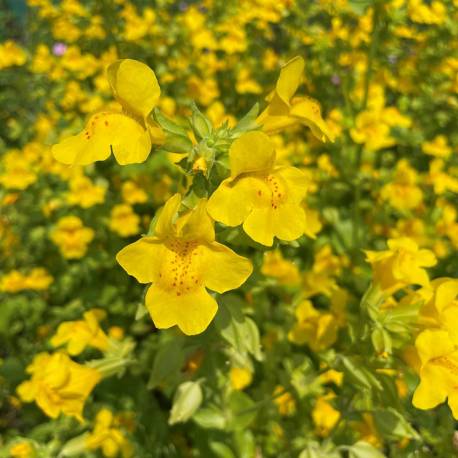No products
Product successfully added to your shopping cart
There are 0 items in your cart. There is 1 item in your cart.
The mimulus is a very covering perennial, which has large and unusual flowers, very ornamental, worn for months and of a beautiful bright yellow.
Parte di pianta da usare in cucina : foglie
La pianta è in vaso di 17-18 cm di diametro
10 Items
The mimulus is a very covering perennial, which has large and unusual flowers, very ornamental, worn for months and of a beautiful bright yellow.
Suitable in mixed borders as a foreground/background plant, and also in pots, where the prolonged flowering will be enhanced. It requires little care. It self-seeds if the faded flowers are not removed, and can be invasive.
Classification
Common name: Yellow Mimolo, Yellow monkeyflower
Genus and species: Mimulus guttatus
Cultivars: -
Family: Scrophulariaceae.
Characteristics
Description of the flowers: The tubular flowers look like human/animal mouths and have bilateral symmetry; they are arranged in racemes, with numerous flowers.
Flower color: Bright yellow with the flower throat enlivened by copper-orange spots.
Flowering period: Late spring and all summer.
Leaves: Light green, opposite, round to oval, usually coarsely and irregularly toothed or lobed; semi-evergreen
Fragrance: The flowers smell sweetly.
Dimensions: Height up to 80 cm.
Cultivation
Exposure: Full sun, light shade.
Soil: It has no particular needs.
Irrigation: It loves water, but in soil that retains it it is sufficient to irrigate it as needed.
Frost hardiness: USDA 6b.
Care
Pruning: It loses part of the aerial part depending on the intensity of the frost, so at the beginning of winter or early spring, the dry parts can be cut; remove the faded stems if you want the plant not to be invasive.
Propagation: By division at the end of winter or by sowing in spring after the frosts have passed; from cuttings in late spring/summer.
Notes of interest
Use in cooking: The leaves - raw or cooked, with a slightly bitter taste - are added to salads. They are used as a real substitute for lettuce.
Herbal properties: The plant is astringent, in the form of a poultice it is healing (useful for wounds, burns...). A bath in leaves and stems is used for rheumatic pains. The plant is then used in Bach flowers, prescribed for anxiety, fear and phobia problems.












